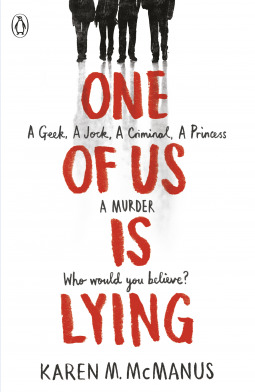
At a high school in Southern California, five students are gathering for detention. They appear to fit into familiar categories: the loner geek; the honours student; the sports star; the pampered princess; the budding criminal. A noise draws them to the window: a car accident in the parking lot. When they turn back around, something has changed in the room which means that only four of them will leave it alive.
This book was described to me as The Breakfast Club written by Agatha Christie, which is essentially how it plays out. It’s a classic locked room mystery. Nobody else comes in or out. There’s a very narrow window in which the fatal blow could have been dealt. And yet, also as in your standard Christie, it becomes clear that the crime must have been planned in advance – and all four of them have a motive for murder.
Because this is an under-developed YA novel, most of the adults in it are both one-dimensional and totally useless, and that includes the police in the town. This forces the four survivors to start investigating the crime themselves – even though, as the title says, it seems that one of them must be lying. They take turns to narrate the action in the first person, so presumably at least one of them must be an unreliable narrator, which is a familiar device for you and I but could conceivably make a teenager’s mind explode. When the solution came, I had not foreseen it, but could immediately see the hints sprinkled through the novel, which is the most satisfying kind of detective story solution.
Much about this novel was predictable, in particular the fact that all four of the main characters are not what they seem, which is not my experience of teenagers generally (who are usually exactly what they seem). The writing was just barely good enough to keep me reading – it is a debut novel, and it felt like it. For a novel narrated by four different characters, it did nothing to distinguish between the different voices of the narrators, and more than once I had to flick back to remind myself whose head I was sitting in. What it did do well was to capture the heightened emotional stakes that go with being a teenager, when everything feels like life and death, even when what actually happened is just that your friend didn’t sit next to you at lunch. Add it all up, and what you have is a novel with well-constructed bones that lacks the polish of experience, but somehow still manages to be addictive.
Trigger warning: discussion of school shootings/mass murder-suicide; parental homophobia; emotionally abusive relationship.